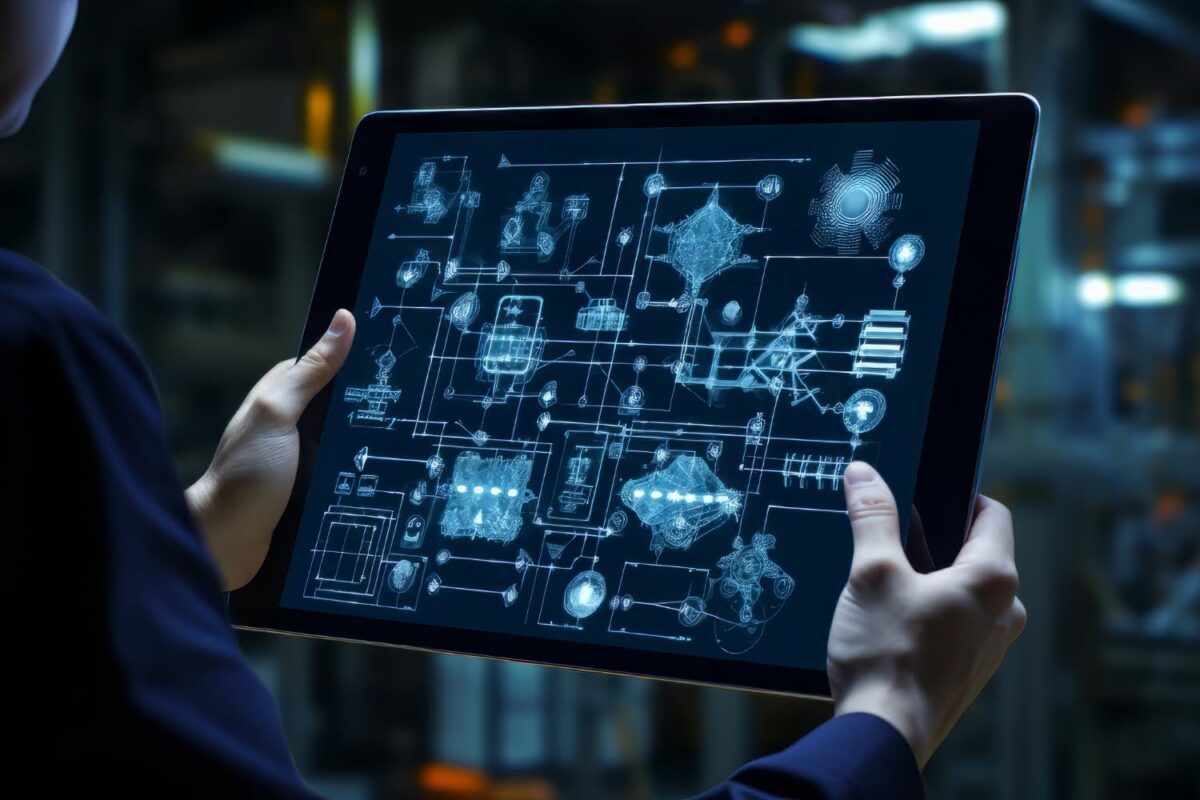Have you ever wondered how businesses manage their commercial utilities in real time? The answer lies in the Internet of Things (IoT). It has had a big impact on the commercial sector in managing water systems, gas systems, sewer lines, HVAC systems, pipe bursting, and other factors. Through these devices, collecting data becomes easier for companies, helping them to make informed decisions, easily spot issues, and contribute towards proactive issue resolution. If you also want to monitor and control commercial utility issues smartly with IoT’s help, continue reading.
Understanding IoT
The term Internet of Things (IoT) was created in 1999 by a computer scientist at Procter & Gamble. It is a technological platform for communication between physical objects between humans and machines, as well as machine-to-machine communication via the Internet. Within the IoT ecosystem, objects can be divided into two categories:
Smart Objects:
Smart objects are intelligent entities capable of communicating, reacting, and recognizing other objects, thus minimizing the need for direct human interaction in various systems. These objects have physical shapes, communication abilities, specific names and addresses, processing capabilities, and sensing functions. For example, smartphones, smart appliances, and microcontrollers like Arduino. These devices can monitor and control utility usage, detect leaks, and improve workings.
Non-Smart Objects:
On the other hand, non-smart objects lack these capabilities and cannot interact or communicate within a network. They rely on external systems or need manual control and monitoring.
Impact of Iot On Monitoring And Controlling Commercial Utility
1. Water Management
IoT has improved water management in commercial buildings. Smart water meters and leak detection sensors provide real-time data on water consumption and detect leaks early. Through these systems, it becomes easy for businesses to monitor water usage across different areas. This not only helps in reducing water wastage but also in preventing damage caused by leaks, which can be costly to repair.
For commercial properties with wide landscaping, IoT-enabled irrigation systems adjust watering schedules based on weather forecasts and soil moisture levels. This conserves water and maintains the health of the landscape, which can enhance the property’s aesthetics and value. Commercial construction services often incorporate these advanced IoT solutions to ensure efficient water management, which is particularly important in areas where water is scarce, and conservation is essential.
2. Sewer Lines and Storm Systems
Sewer lines and storm systems are necessary for managing wastewater and preventing flooding. IoT in utilities industry has evolved to provide smart monitoring that can give real-time data on the condition and flow of these systems.
Sewer Lines: IoT sensors can be placed in sewer lines to observe flow rates, measure the levels of waste and much more. This real-time data helps in identifying issues before they convert into major problems. For instance, early detection of blockages can prevent overflows and backups, which otherwsie can cause damage and even pose several health risks.
Storm Systems: IoT devices monitor rainwater levels, flow rates, and the condition of storm drains. This information helps in managing stormwater more effectively, predicting flooding events, and coordinating responses.
3. Pipe Bursting
Pipe bursting is a trenchless technology used for replacing old or damaged pipes without excavation. With the help of IoT sensors, it’s easy to check the condition of existing pipes and identify areas that require replacement. Additionally, the implementation of AI in the utilities industry enhances this process by analyzing data from IoT sensors to predict potential failures and optimize replacement schedules.
Also, IoT systems can combine with Geographic Information Systems (GIS) to provide detailed mapping and analysis of underground infrastructure. This helps in planning pipe replacement activities and avoiding clashes with other utilities.
4. HVAC Systems
HVAC systems are essential for maintaining a comfortable environment in commercial buildings, but they are also one of the largest consumers of energy. However, within the power utility industry, IoT-enabled HVAC systems can adjust settings based on indoor conditions such as occupancy, weather forecasts, and individual preferences. For example, sensors can detect when rooms are unoccupied and adjust the temperature accordingly. This leads to more efficient processing and thus, energy savings.
5. Security Systems
Security is another area where IoT has made an important impact. Smart security systems can provide real-time monitoring and alerts, which increases the safety and security of commercial properties in power utility industry. IoT systems can include smart cameras, motion detectors, and access control systems that can be monitored and controlled remotely.
For example,
- Security cameras that use IoT technology can send live video from anywhere. This helps to quickly respond to security problems.
- IoT systems can be programmed to automatically notify emergency services or security personnel if certain criteria are met, such as an unauthorized entry or a detected fire.
- Security systems can leverage cloud memory for storing surveillance footage and security data. This ensures that video records are safely backed up and accessible even if local hardware is damaged or compromised.
- Not just that, these control systems can be combined with mobile devices to provide easy and secure access to facilities.
6. Predictive Maintenance
Predictive maintenance is a major advantage of IoT technology. By checking data collected from various sensors, IoT systems can predict when maintenance is required before a failure occurs. This predictive ability is based on the identification of patterns and irregularities in the system’s data. Instead of following regular maintenance schedules, predictive maintenance helps to fix things before they break, reducing unexpected problems and cutting down on breakdowns. For example, in a commercial building, IoT sensors can monitor the performance of elevators, HVAC systems, and other important equipment. This not only lowers maintenance costs but also extends the lifespan of equipment by managing issues earlier.
Challenges and Considerations
While IoT offers significant benefits, several challenges need to be addressed:
Cyber Security: Internet of Things utilities, due to their interconnected nature and the vast amounts of data they handle, can present security challenges. To address these concerns, it is better to take action earlier. To tackle this, you can implement encryption methods to protect data transmission and apply regular security updates and patches to your devices. Besides, you can create a strong security plan for your system. This plan should include segmenting your network into smaller sections and keep an eye out for any strange activity. This strategy can help protect your system from being hacked.
User Training and Adaptation: New IoT technologies require necessary skills, and it can be difficult for the staff to use IoT if they lack these skills. To solve this issue, you can provide training programs and user-friendly manuals such as interactive tutorials and hands-on workshops. These can help users become more comfortable with the technology. Also, you can provide continuous support through helpdesks or online resources to make sure that users can get assistance whenever needed, making the transition smoother.
Scalability: As you add more Internet of Things utilities, it can be challenging to manage everything. To handle this, design your system to be flexible and able to grow with your needs. Use cloud services to manage the increased load and process data more efficiently. By using edge computing, you process data closer to where it’s generated, which helps reduce the strain on your main servers. Good management practices and AI tools can also enhance scalability.
Data Regulatory Compliance: Managing the data from IoT devices while following privacy laws can be complex. Make sure you have clear policies for how data is collected, used, and stored. These regular audits and inspections can help identify and fix any issues and give you the surety that you’re following the rules and regulations. It is necessary for you to not only understand the rules but also to educate all involved about the importance of data privacy and compliance.
Wrapping Up
The integration of IoT for utility industry represents a significant advancement, offering businesses unprecedented control and visibility over their infrastructure.
If you also want to take benefit of the Internet of Things utilities, Dub-L-EE, a leading commercial utility contractor, can help you with utility repairs and installations. Contact Dub-L-EE today to optimize your utility systems and experience the future of smart management.

Eddie has been a resident of Albuquerque his entire life.
After he graduated from high school, Eddie joined the Plumbers & Pipefitters Union where he obtained his Journeyman Plumber and Journeyman Gas Certifications. He then worked in the commercial plumbing industry for 7 years until he and his father decided to go into business together and started Dub-L-EE, LLC.
In the last 7 years Eddie has obtained his GA02, GA03, and MM98 certifications allowing Dub-L-EE to fully utilize Eddie Sr. and Eddie Jr.’s expertise in the construction industry.

